Transforming your living space with plants creates an instant connection to nature while enhancing your home's aesthetic appeal. Whether you're seeking dramatic statement pieces or subtle green accents, plants offer endless decorating possibilities that suit every style preference. From cascading hanging gardens to structured terrarium displays, botanical decor brings life, color, and texture to any room. The key lies in understanding how different plant arrangements can define spaces, create focal points, and establish unique design themes. These versatile decorating approaches work seamlessly with various interior styles while providing air-purifying benefits and mood-enhancing qualities that make your home feel more vibrant and welcoming.

1. Bohemian Macrame Hanging Garden

Create a free-spirited boho paradise by combining macrame plant hangers with trailing plants like pothos, spider plants, and string of hearts. Layer different rope textures and hanging heights to establish visual depth throughout your living space. Choose natural fiber containers in cream, beige, and earthy tones that complement the macrame's organic aesthetic. Position these hanging gardens near windows where natural light filters through the cascading foliage, creating beautiful shadow patterns on walls. Add woven baskets, vintage rugs, and textured pillows to complete the relaxed bohemian atmosphere that celebrates handcrafted artistry and natural living elements.
2. Living Room Statement Corner Display
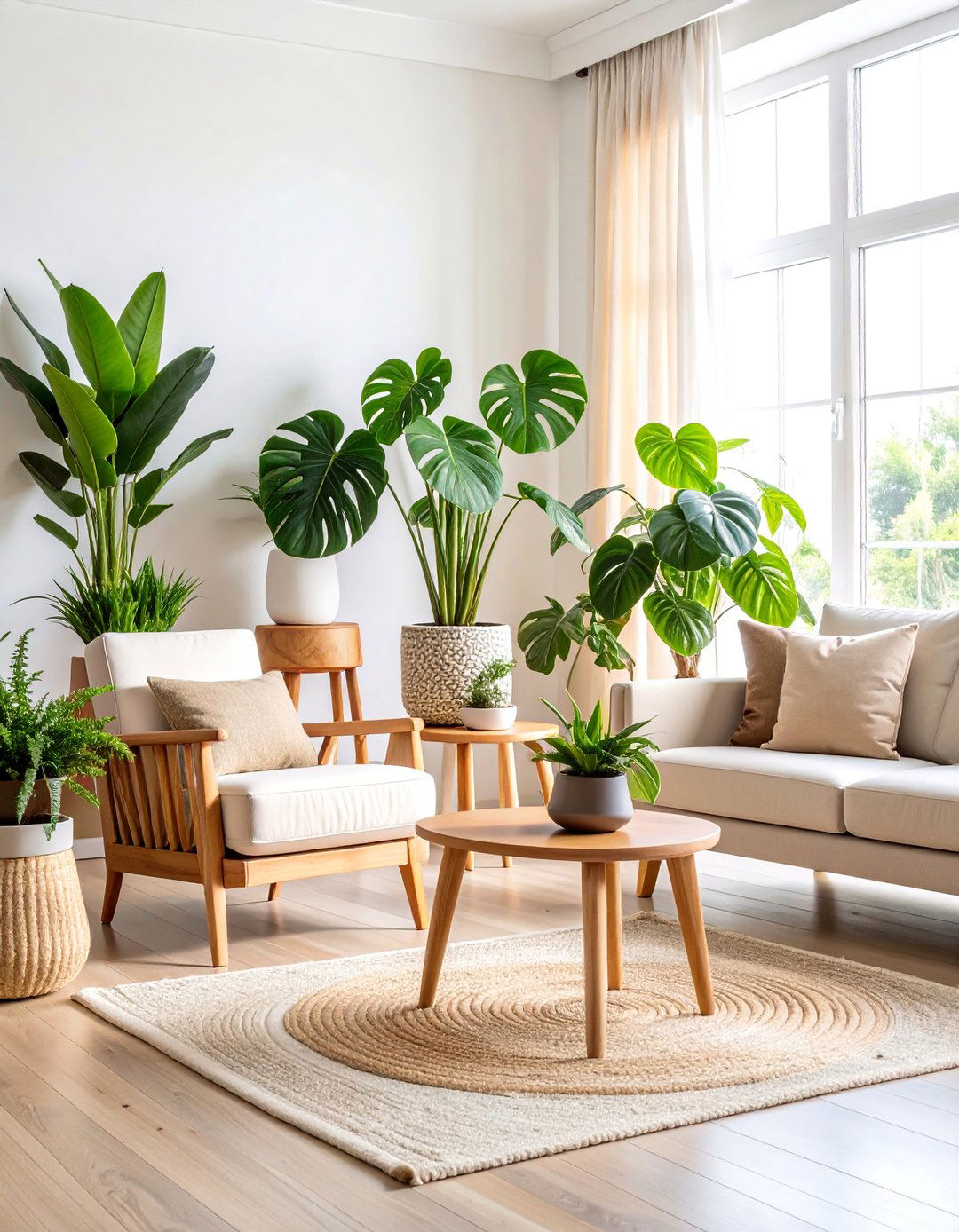
Transform an empty corner into a dramatic focal point using large floor plants like fiddle leaf figs, monstera deliciosa, or bird of paradise. Create height variation by placing plants on different levels using wooden plant stands, woven baskets, and ceramic planters in coordinating neutral tones. Arrange smaller plants around the base to fill gaps and add texture contrast through varied leaf shapes and sizes. Position this corner display near natural light sources while ensuring adequate space for growth. The layered arrangement creates visual weight that anchors the room while providing a lush, tropical atmosphere.
3. Kitchen Herb Garden Display

Design a functional culinary garden by arranging potted herbs like basil, rosemary, thyme, and mint on floating shelves, windowsills, and countertop plant stands. Use matching terracotta pots or sleek ceramic containers that complement your kitchen's color scheme. Create a dedicated herb station near the cooking area for easy access during meal preparation. Install grow lights under cabinets if natural light is limited. Label each herb with stylish plant markers or chalkboard tags. This practical arrangement combines fresh ingredient accessibility with beautiful green decor that makes your kitchen feel more alive and connected to nature.
4. Bathroom Tropical Spa Retreat
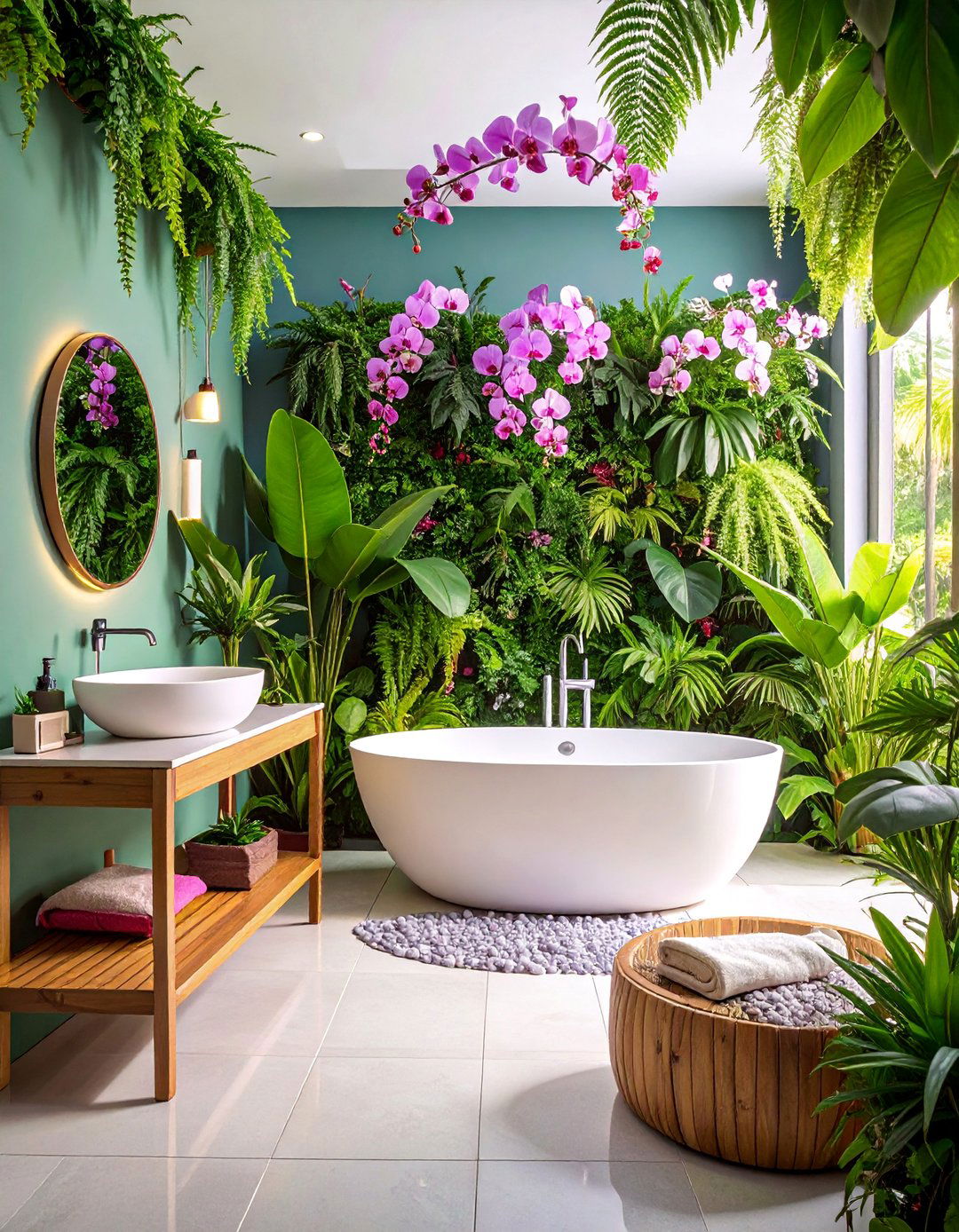
Transform your bathroom into a luxurious spa environment using humidity-loving plants like Boston ferns, air plants, orchids, and snake plants. Position plants on bathroom shelves, the bathtub ledge, and hanging from ceiling hooks to create layered greenery throughout the space. Choose plants that thrive in low-light, high-humidity conditions while using decorative containers that resist moisture damage. Add natural materials like bamboo plant stands and pebble drainage trays. The lush tropical arrangement purifies air while creating a serene, resort-like atmosphere that transforms daily bathing routines into rejuvenating spa experiences.
5. Bedroom Air-Purifying Plant Sanctuary

Create a peaceful sleeping environment by arranging air-purifying plants like snake plants, peace lilies, and spider plants throughout your bedroom. Place larger plants in floor stands near windows while positioning smaller varieties on nightstands and dressers. Choose plants that release oxygen at night and filter harmful toxins from the air. Use calming containers in soft colors like white, sage green, or natural wood that promote relaxation. The gentle presence of these plants creates a serene atmosphere conducive to restful sleep while maintaining clean, fresh air throughout the night hours.
6. Vertical Living Wall Installation

Construct a stunning living wall using mounted shelves, pocket planters, or trellis systems filled with various plants including ferns, pothos, and small flowering varieties. Design the arrangement to create a lush green tapestry that serves as living artwork. Choose plants with similar light and water requirements for easier maintenance. Install proper drainage systems and consider automated watering for larger installations. Mix trailing and upright plants to create natural movement and visual interest. This dramatic feature wall transforms any room into a botanical paradise while maximizing growing space in compact areas.
7. Terrarium Miniature World Collection
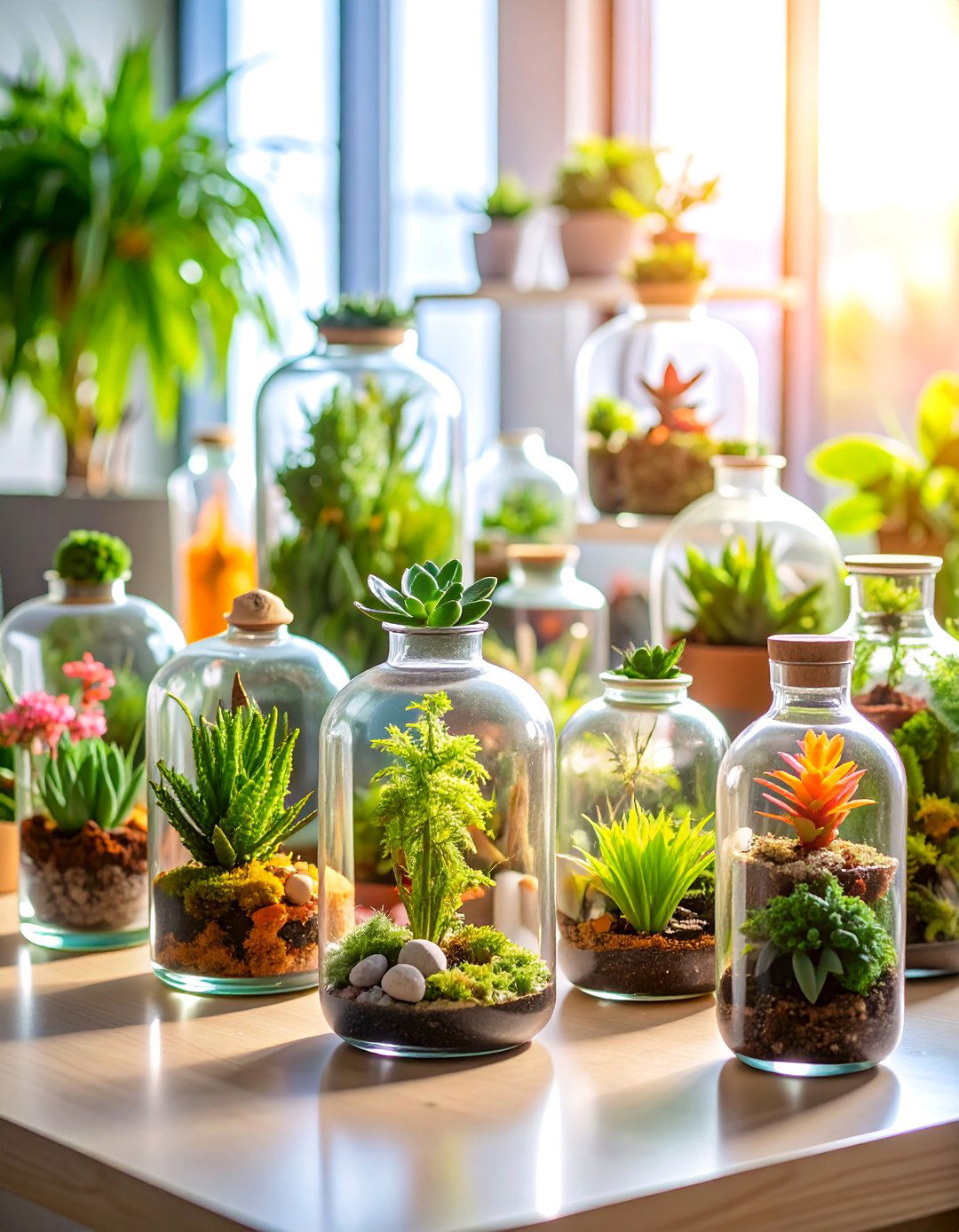
Design enchanting miniature landscapes using glass containers filled with air plants, succulents, moss, and decorative elements like stones, driftwood, and figurines. Create themed terrariums representing different environments like desert scenes, fairy gardens, or tropical rainforest ecosystems. Arrange multiple terrariums of varying sizes on shelves, coffee tables, and windowsills to create an engaging display. Use both open and closed container styles to accommodate different plant needs. These self-contained ecosystems serve as conversation pieces while bringing whimsical charm and low-maintenance greenery to any space throughout your home.
8. Scandinavian Minimalist Plant Styling

Achieve clean, Nordic-inspired aesthetics by selecting architectural plants like rubber trees, snake plants, and fiddle leaf figs displayed in simple white or natural wood containers. Emphasize negative space and geometric forms while maintaining uncluttered arrangements that highlight each plant's natural beauty. Position plants strategically to create balance without overwhelming the room's minimalist design principles. Use neutral-toned planters and simple plant stands that blend seamlessly with light wood furniture and white walls. This understated approach celebrates plant forms as natural sculptures while maintaining the serene, functional atmosphere characteristic of Scandinavian interior design.
9. Vintage Industrial Plant Showcase
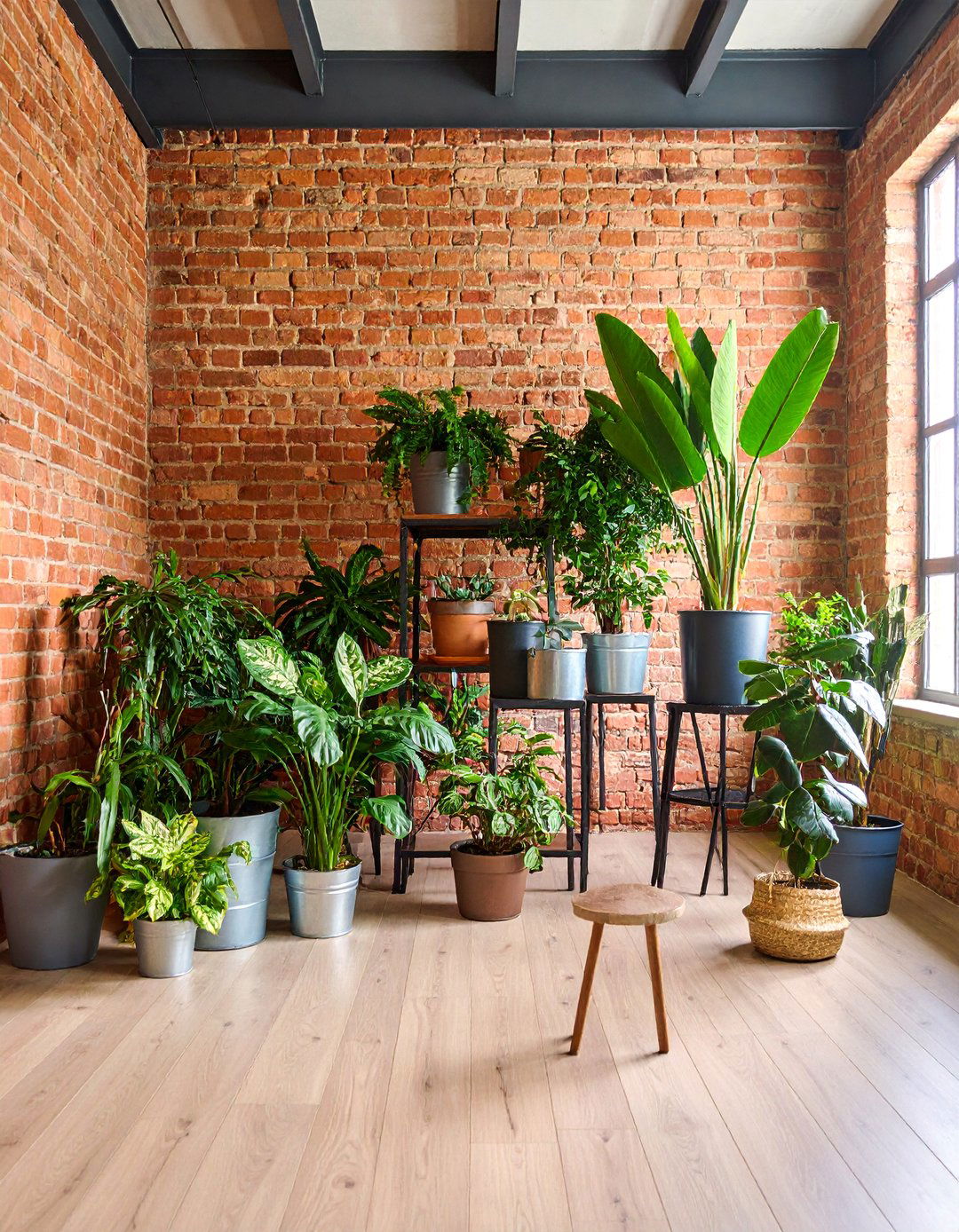
Combine plants with industrial elements like metal plant stands, galvanized containers, and exposed brick backgrounds to create an urban loft aesthetic. Choose hardy plants like ZZ plants, sansevieria, and rubber plants that complement the raw, edgy environment. Use weathered metal containers, vintage wire baskets, and reclaimed wood plant stands to enhance the industrial theme. Position plants against concrete walls or near large windows with metal frames. Add Edison bulb string lights and vintage accessories to complete the look. This style celebrates the contrast between soft, organic plants and hard, industrial materials.
10. Propagation Station Display
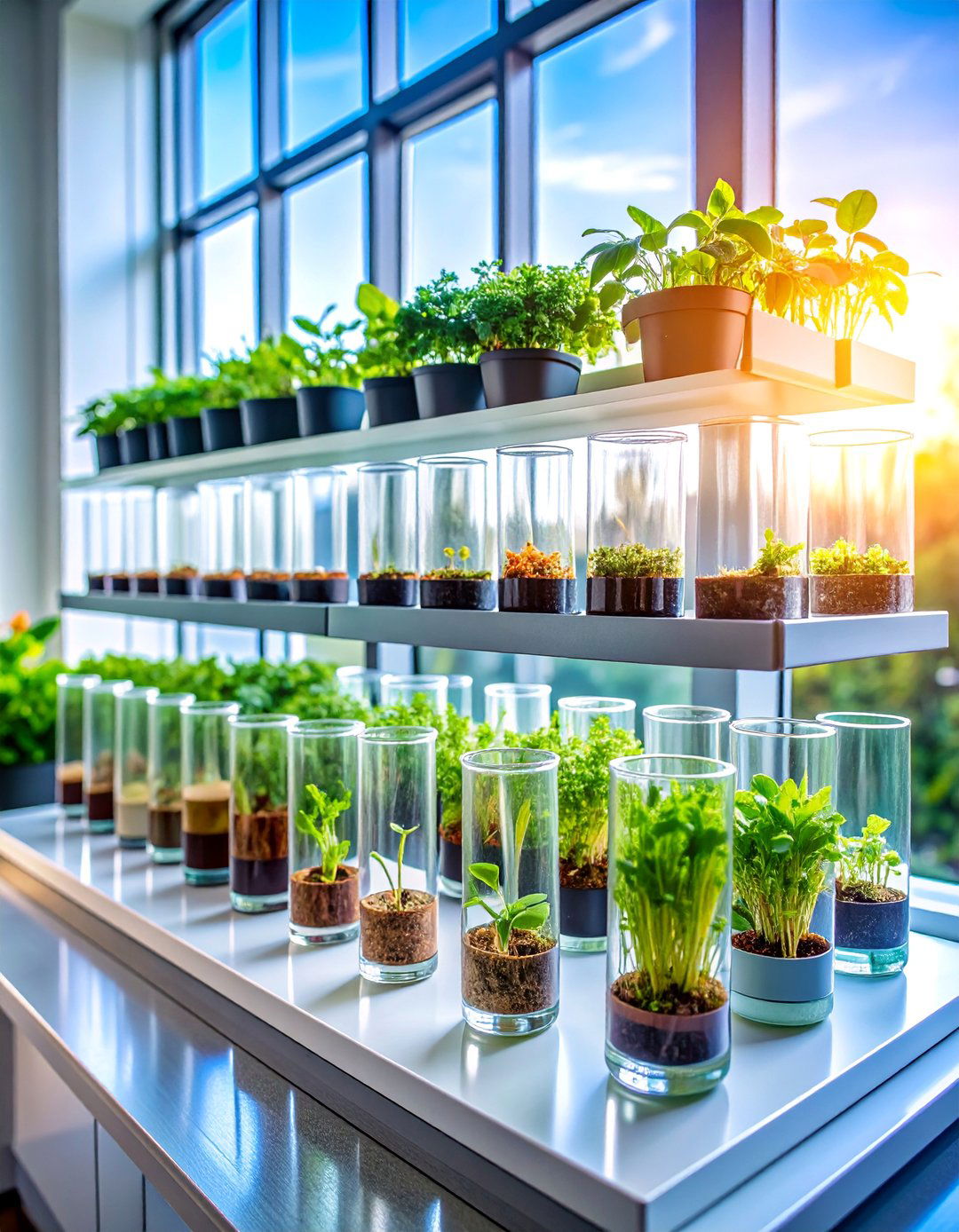
Create an engaging plant nursery by displaying plant cuttings in glass vessels, test tubes, and clear containers arranged on shelves or window ledges. Use various propagation methods including water propagation, moss propagation, and soil starting techniques. Arrange containers at different heights using tiered stands or floating shelves to create visual interest. Label each cutting with plant names and propagation dates. This living science experiment serves as educational decor while expanding your plant collection. The transparent containers showcase root development, creating fascinating displays that change and grow over time, making plant propagation an artistic decorating element.
11. Desert Succulent Garden Theme

Design a drought-tolerant landscape using various succulents, cacti, and air plants arranged in sandy-colored containers with excellent drainage. Create height variation using different plant stands and group plants with similar water and light needs together. Add decorative elements like colored sand, decorative stones, and driftwood to enhance the desert aesthetic. Position this arrangement in bright, sunny locations where these plants naturally thrive. Use terracotta pots, concrete planters, and woven baskets in earth tones. This low-maintenance theme brings desert beauty indoors while requiring minimal care and creating striking architectural plant forms.
12. Hanging Plant Chandelier Feature

Construct a dramatic overhead display by suspending multiple plants at varying heights from ceiling hooks or a circular frame to create a living chandelier effect. Choose trailing plants like string of pearls, pothos, and spider plants that create beautiful cascading effects. Ensure proper weight distribution and use strong mounting hardware for safety. Position this feature over dining tables, in entryways, or above seating areas where it won't obstruct movement. Add subtle uplighting to highlight the plants' textures and create enchanting shadow patterns. This striking centerpiece transforms ceiling space into functional growing area while providing dramatic visual impact.
13. Corner Reading Nook Plant Haven

Transform a quiet corner into a cozy reading retreat surrounded by leafy companions that create a natural, secluded atmosphere. Position large floor plants like monstera or rubber trees behind seating while placing smaller plants on side tables and nearby shelves. Choose plants that thrive in lower light conditions if the corner receives limited sunlight. Add soft lighting, comfortable seating, and natural textures like woven baskets and wood accents. The plants create a sense of privacy and tranquility while purifying air and providing a calming green backdrop for relaxation and reading activities.
14. Floating Shelf Plant Gallery

Install floating shelves at various heights to create a dynamic plant gallery that maximizes wall space while showcasing your collection. Mix plant sizes, textures, and container styles to create visual rhythm and interest. Include trailing plants that cascade beautifully from upper shelves while positioning upright varieties to add structure. Choose shelves in natural wood or clean white finishes that complement your room's aesthetic. Ensure adequate spacing between shelves for plant growth and easy maintenance access. This vertical arrangement transforms empty walls into living art installations that evolve and change as plants grow.
15. Entryway Welcome Plant Display
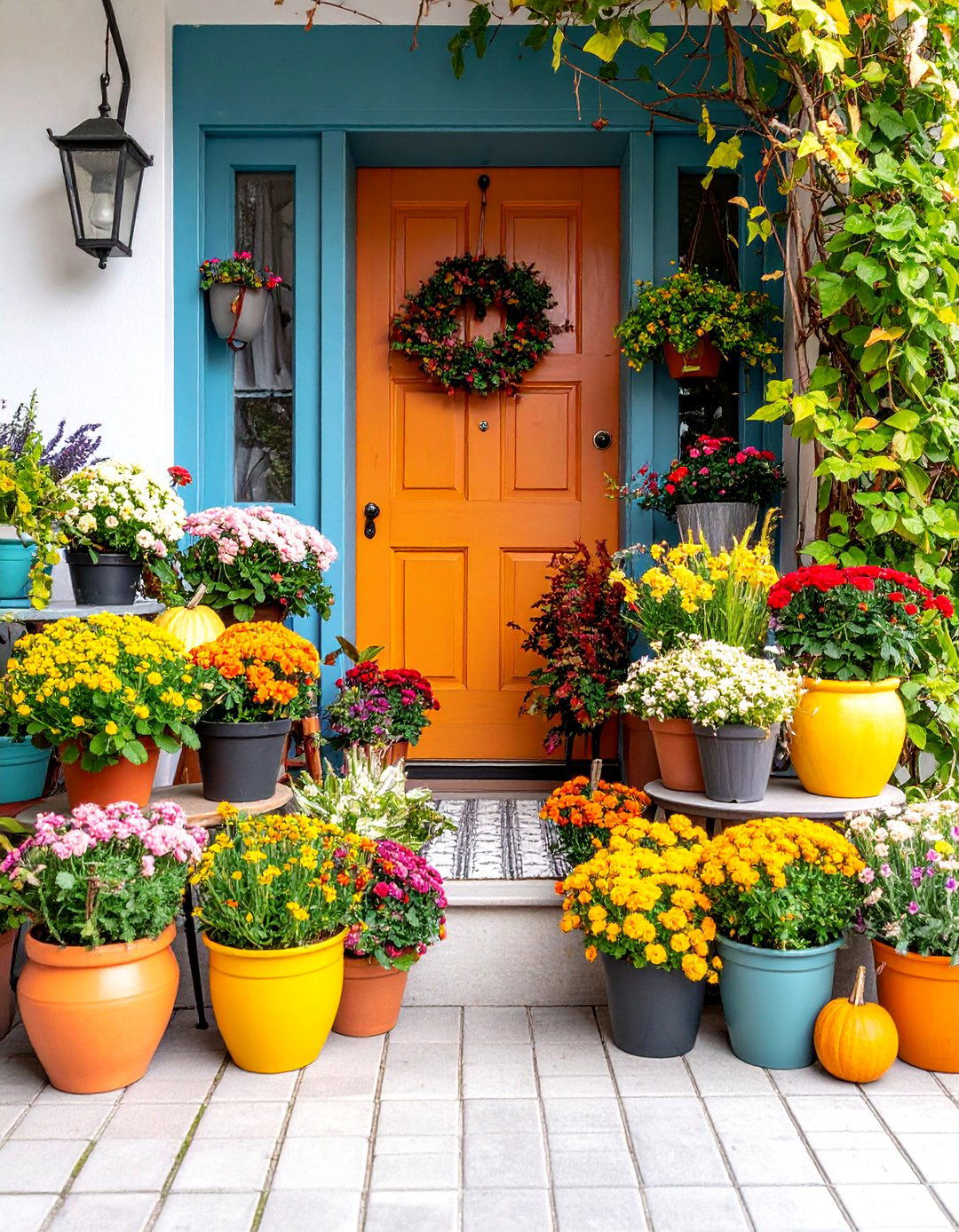
Create an inviting first impression by arranging plants near your entrance using a combination of floor plants, hanging specimens, and table displays. Choose hardy plants that tolerate varying light conditions and temperature changes from opening doors. Position larger plants in decorative floor planters while using console tables or plant stands to display smaller varieties. Add welcoming elements like seasonal flowers or plants with interesting textures. This arrangement sets a warm, natural tone for your home while providing guests with an immediate sense of your style and love for living plants.
16. Window Garden Light Gallery
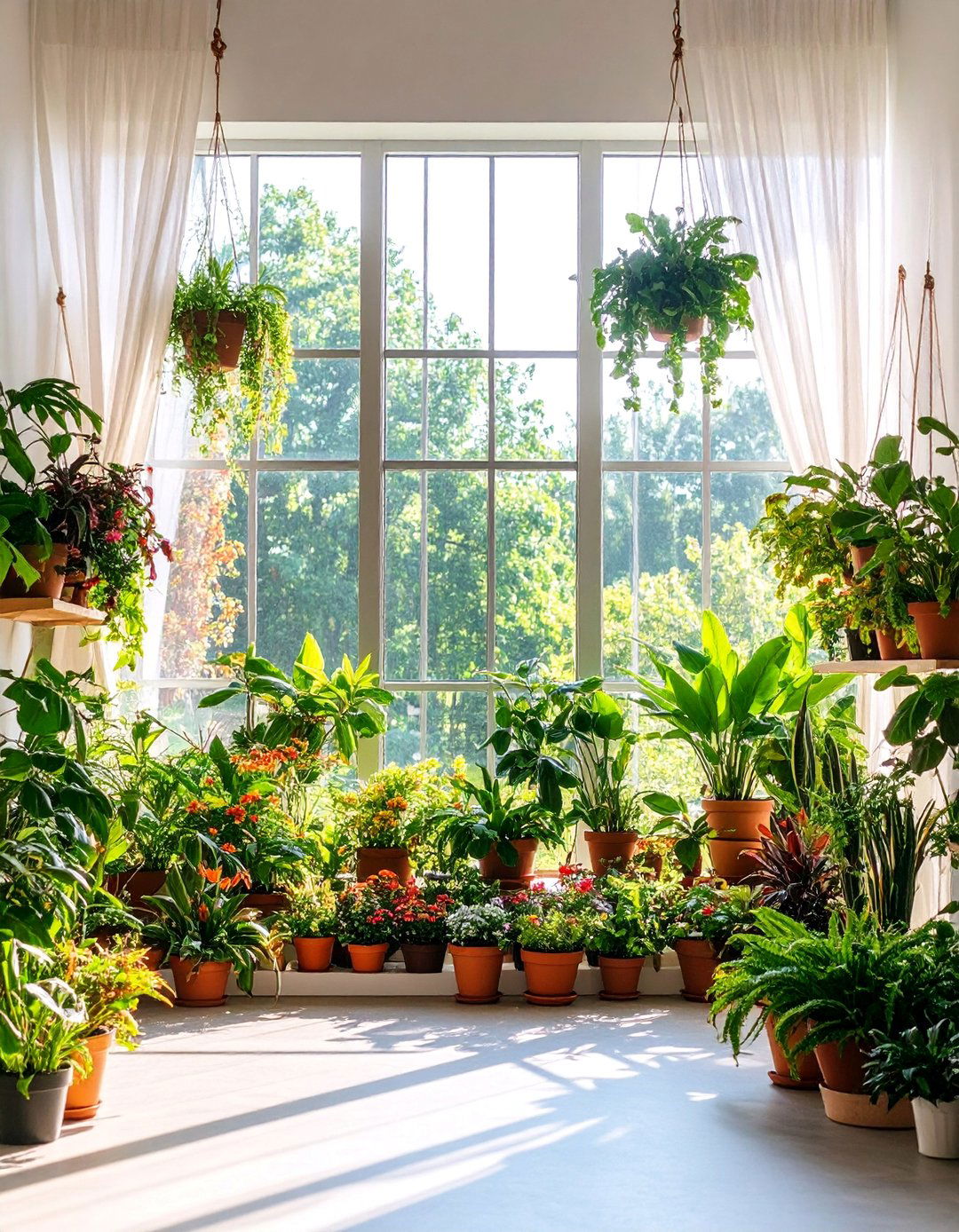
Maximize natural light by creating layered plant displays along windows using hanging plants, windowsill arrangements, and tall floor plants positioned nearby. Choose plants with varying light requirements to make the most of different light intensities throughout the window area. Use glass shelves or clear plant stands that don't block light while providing additional growing space. Include both sun-loving and partial shade plants to create depth. Add sheer curtains that filter harsh light while maintaining the bright, airy atmosphere. This arrangement creates a greenhouse effect that showcases plants beautifully while providing optimal growing conditions.
17. Monochromatic Green Plant Scheme
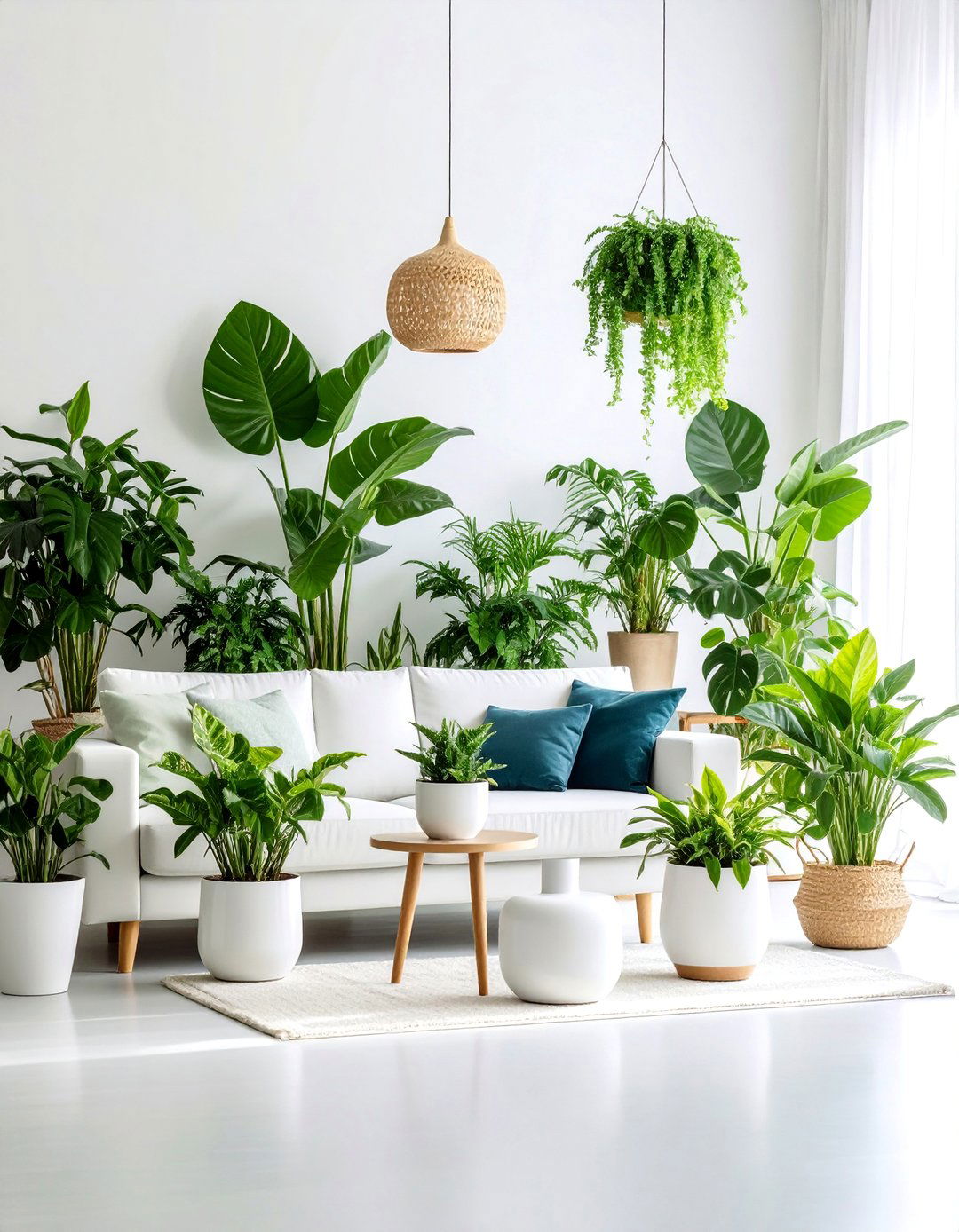
Design a sophisticated display using plants with varying shades and textures of green foliage to create depth without color distraction. Choose plants with different leaf shapes, sizes, and surface textures like glossy rubber plants, velvety begonias, and feathery ferns. Use containers in neutral tones like white, black, or natural materials that won't compete with the subtle color variations. This approach emphasizes form, texture, and growth patterns while creating a calming, cohesive look. The monochromatic scheme allows the natural beauty of plant structures to take center stage while maintaining visual harmony throughout the space.
18. Plant Stand Tiered Garden Tower

Create vertical interest using multi-level plant stands that accommodate various plant sizes while maximizing floor space efficiency. Arrange plants according to their light and water needs, placing sun-lovers on top tiers and shade-tolerant varieties below. Mix plant heights, textures, and container styles to avoid monotony while maintaining cohesive color schemes. Choose sturdy stands in materials like wood, metal, or bamboo that complement your interior style. This tower arrangement works well in corners, beside furniture, or as room dividers. The tiered structure creates dynamic displays that draw the eye upward while providing homes for multiple plants.
19. Air Plant Artistic Installation
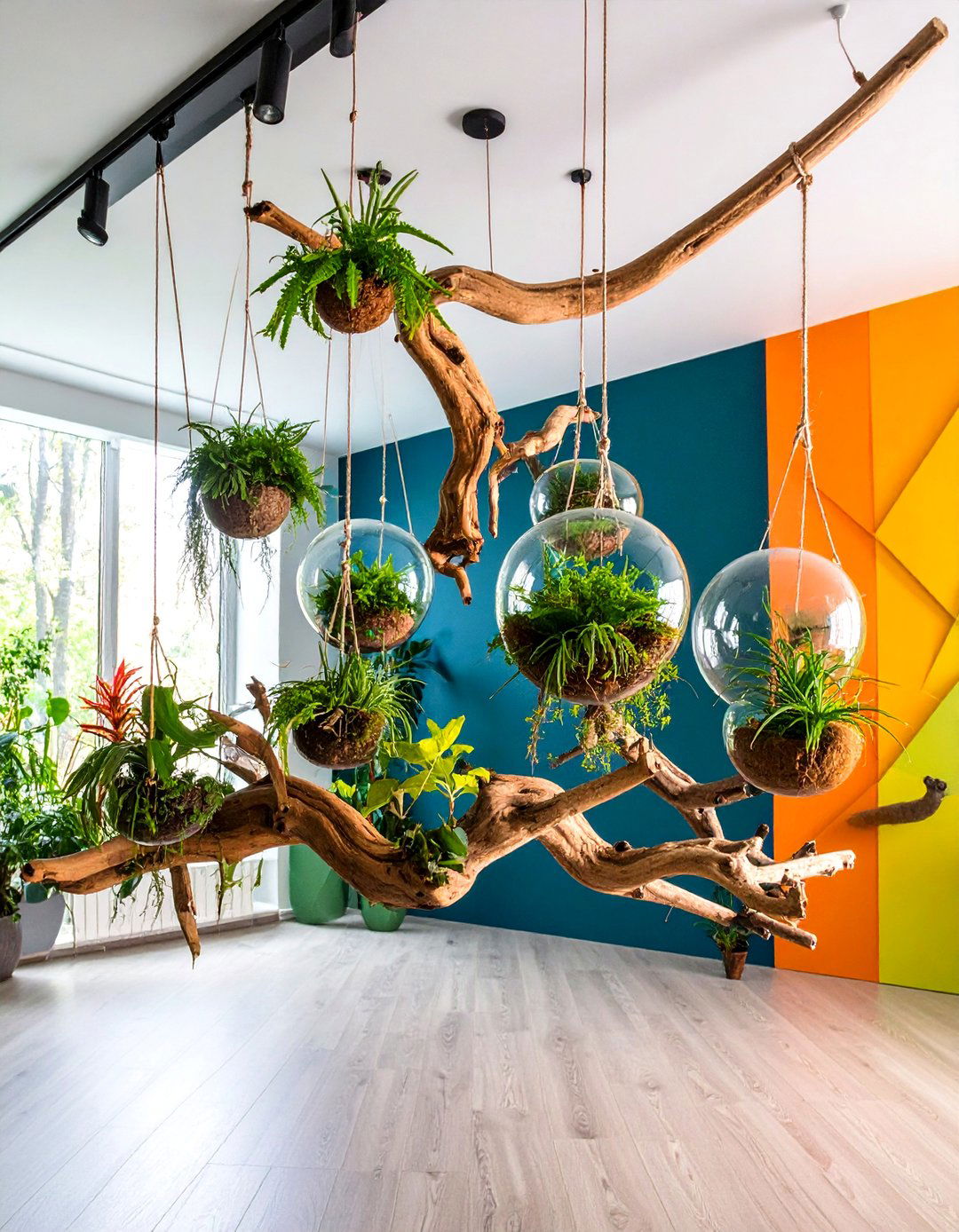
Design sculptural displays using air plants attached to driftwood, mounted on walls, or suspended in glass globes throughout your living space. These soil-free plants offer ultimate flexibility in placement and artistic arrangement possibilities. Create geometric patterns, organic flowing designs, or modern minimalist installations using various air plant species and mounting techniques. Incorporate natural materials like cork bark, wooden branches, or wire forms as growing supports. Position installations where they receive bright, indirect light and good air circulation. This unique approach treats plants as living art pieces while requiring minimal maintenance and offering maximum creative expression.
20. Herb Spiral Kitchen Island
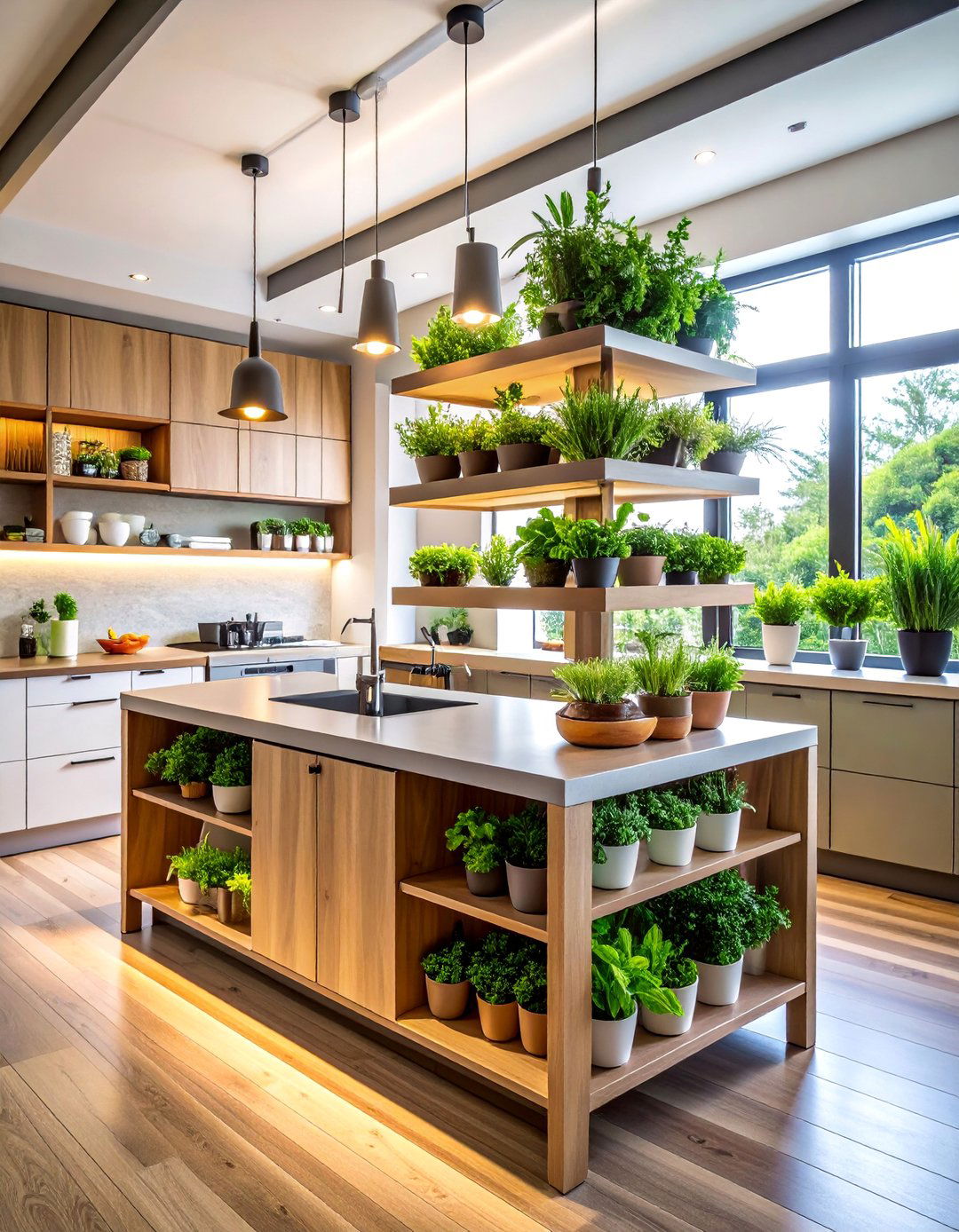
Transform your kitchen island or counter space into a functional herb garden using tiered plant stands or custom-built spiraling planters. Arrange culinary herbs like rosemary, sage, oregano, and chives in easily accessible positions for cooking convenience. Use attractive planters that complement your kitchen design while providing proper drainage and growing conditions. Install task lighting if needed to supplement natural light. Create clear labeling systems for easy identification during cooking. This practical arrangement combines fresh ingredient production with beautiful living decor that makes your kitchen feel more connected to nature and sustainable living practices.
21. Living Room Plant Grouping Oasis

Design intimate conversation areas by grouping plants of varying heights and textures to create natural room divisions and cozy atmospheres. Combine floor plants, table plants, and hanging varieties to establish layers that frame seating areas beautifully. Choose plants that complement your existing color scheme and furniture styles while considering maintenance requirements and light conditions. Use decorative containers that enhance your interior design while providing proper growing environments. This strategic grouping approach creates focal points that anchor furniture arrangements while bringing life and freshness to social spaces where family and friends gather regularly.
22. Seasonal Plant Rotation Display
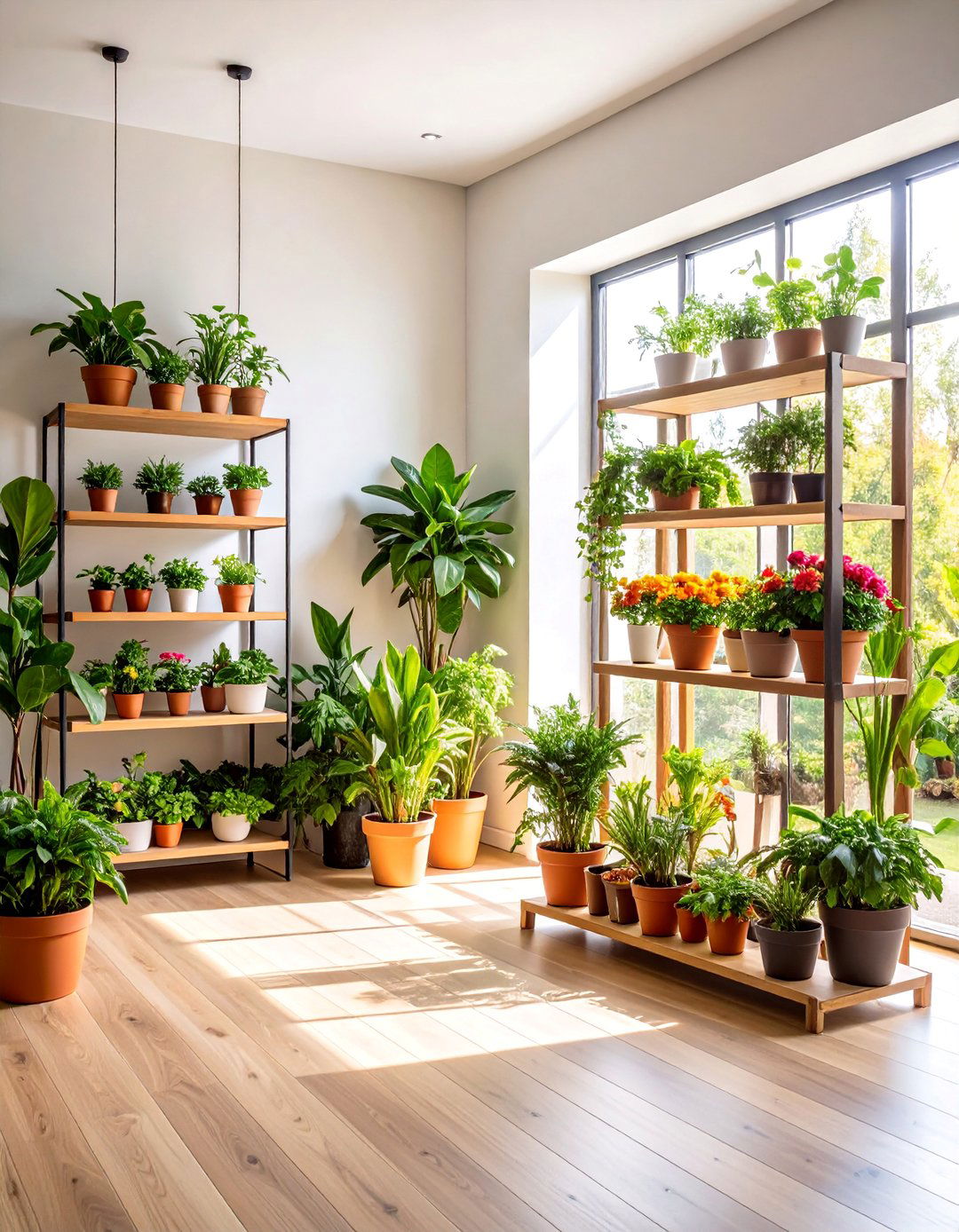
Create dynamic spaces that change throughout the year by designing flexible plant arrangements that can accommodate seasonal varieties and celebrations. Use moveable plant stands, decorative containers, and modular shelving systems that allow easy rearrangement. Include spaces for seasonal flowering plants, holiday decorations, and themed plant selections. Choose permanent plants that provide year-round structure while leaving room for seasonal additions. This approach keeps your plant decor fresh and exciting while allowing you to celebrate different seasons and occasions. The changing displays create ongoing interest and provide opportunities to experiment with new plant varieties.
23. Bathroom Zen Garden Retreat
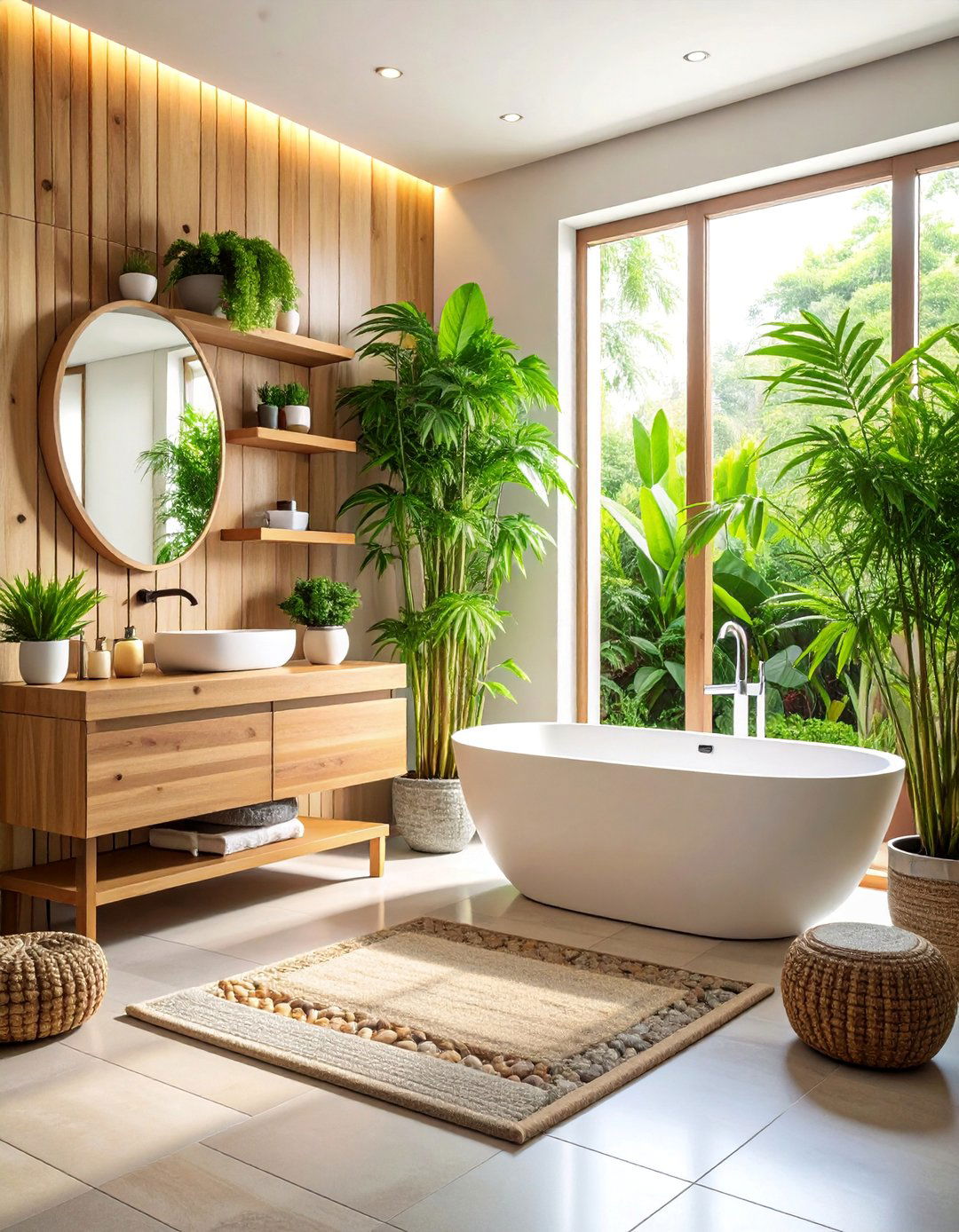
Transform your bathroom into a peaceful sanctuary using plants that thrive in humid conditions arranged with natural materials like river rocks, bamboo, and wooden accents. Include plants like bamboo, snake plants, and air plants that purify air while tolerating bathroom conditions. Create meditation-like arrangements using simple, clean lines and natural textures. Position plants on floating shelves, in floor planters, and hanging from ceiling hooks. Add elements like small water features or aromatic plants like eucalyptus. This serene arrangement promotes relaxation while maintaining clean air and creating a spa-like atmosphere for daily self-care routines.
24. Office Productivity Plant Environment

Design workspace plant arrangements that boost productivity, reduce stress, and improve air quality in office environments. Choose low-maintenance plants like ZZ plants, snake plants, and pothos that tolerate artificial lighting and temperature fluctuations. Position plants strategically to create natural privacy screens, soften harsh lighting, and provide visual breaks from computer screens. Use desk-appropriate containers and compact plant stands that don't interfere with work activities. Include plants with proven air-purifying qualities to enhance indoor environmental quality. This professional approach brings nature indoors while supporting health and productivity in work environments.
25. Multi-Room Plant Flow Design

Create cohesive plant themes that flow seamlessly throughout your entire home by selecting coordinating plants, containers, and arrangement styles that complement each room's function while maintaining visual continuity. Use similar color palettes, materials, and plant families to create connections between spaces. Adapt arrangements to suit each room's specific conditions and purposes while maintaining the overall design aesthetic. Position plants to guide traffic flow and create natural transitions between areas. This comprehensive approach treats your entire home as a unified botanical environment that promotes well-being while showcasing your personal style and love for plants.
Conclusion:
Decorating with plants transforms your home into a living, breathing sanctuary that nurtures both physical and emotional well-being. These diverse approaches demonstrate how botanical elements can enhance any interior style while providing natural air purification and stress reduction benefits. From dramatic statement displays to subtle accent arrangements, plants offer unlimited creative possibilities that evolve with your changing needs and preferences. The key to successful plant decorating lies in understanding each space's unique conditions while selecting arrangements that complement your lifestyle and aesthetic vision, creating harmonious environments where you and your plants can thrive together.



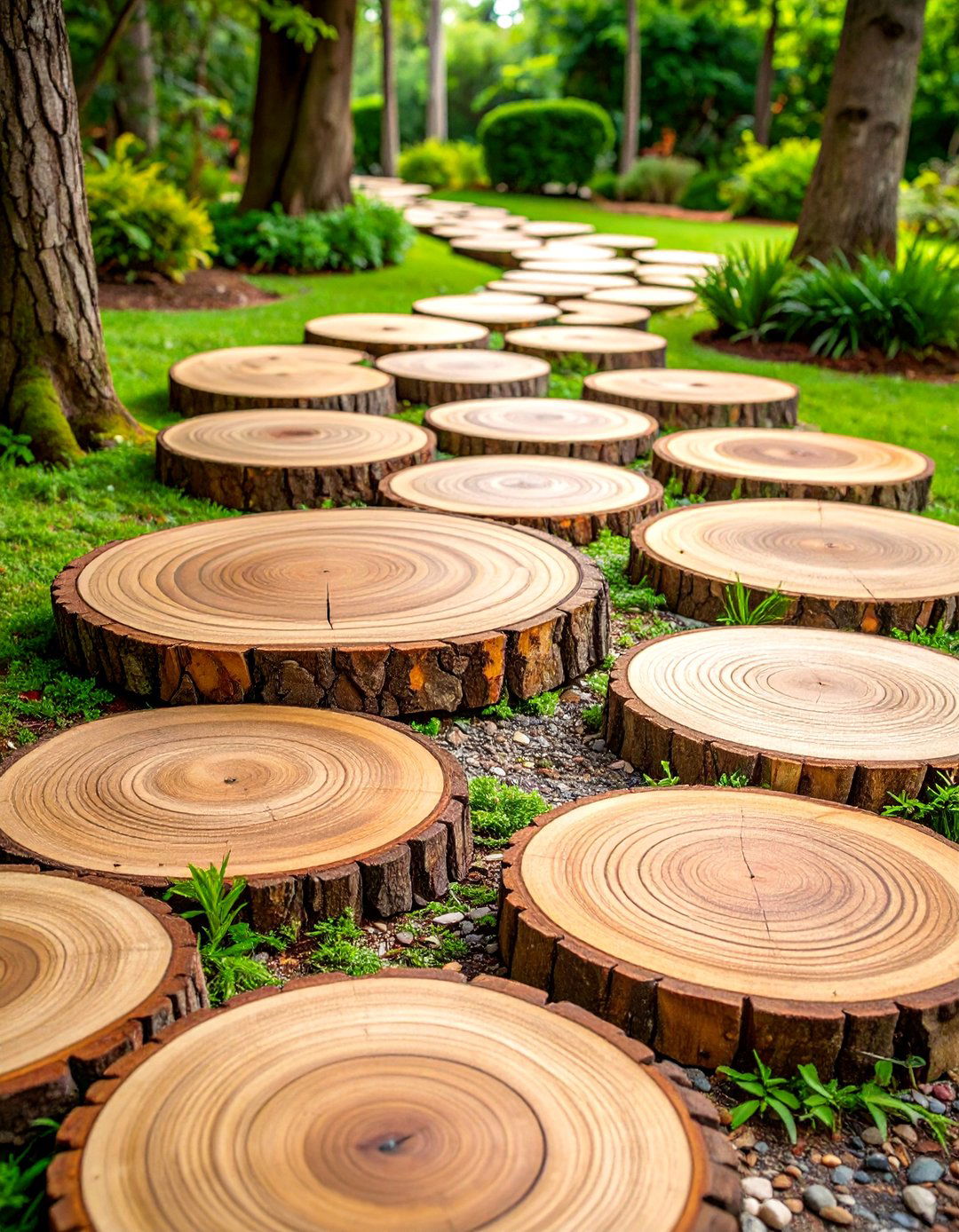
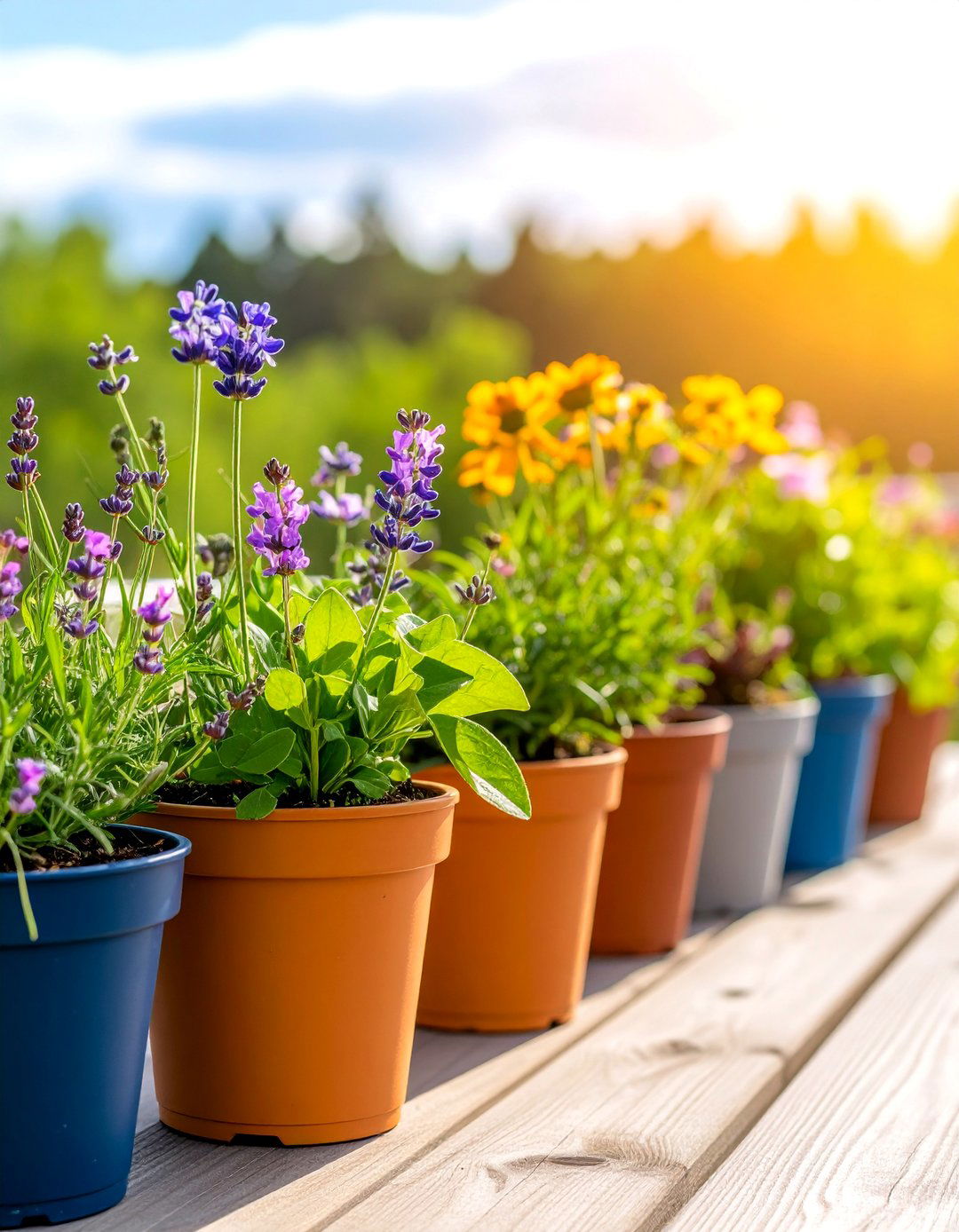


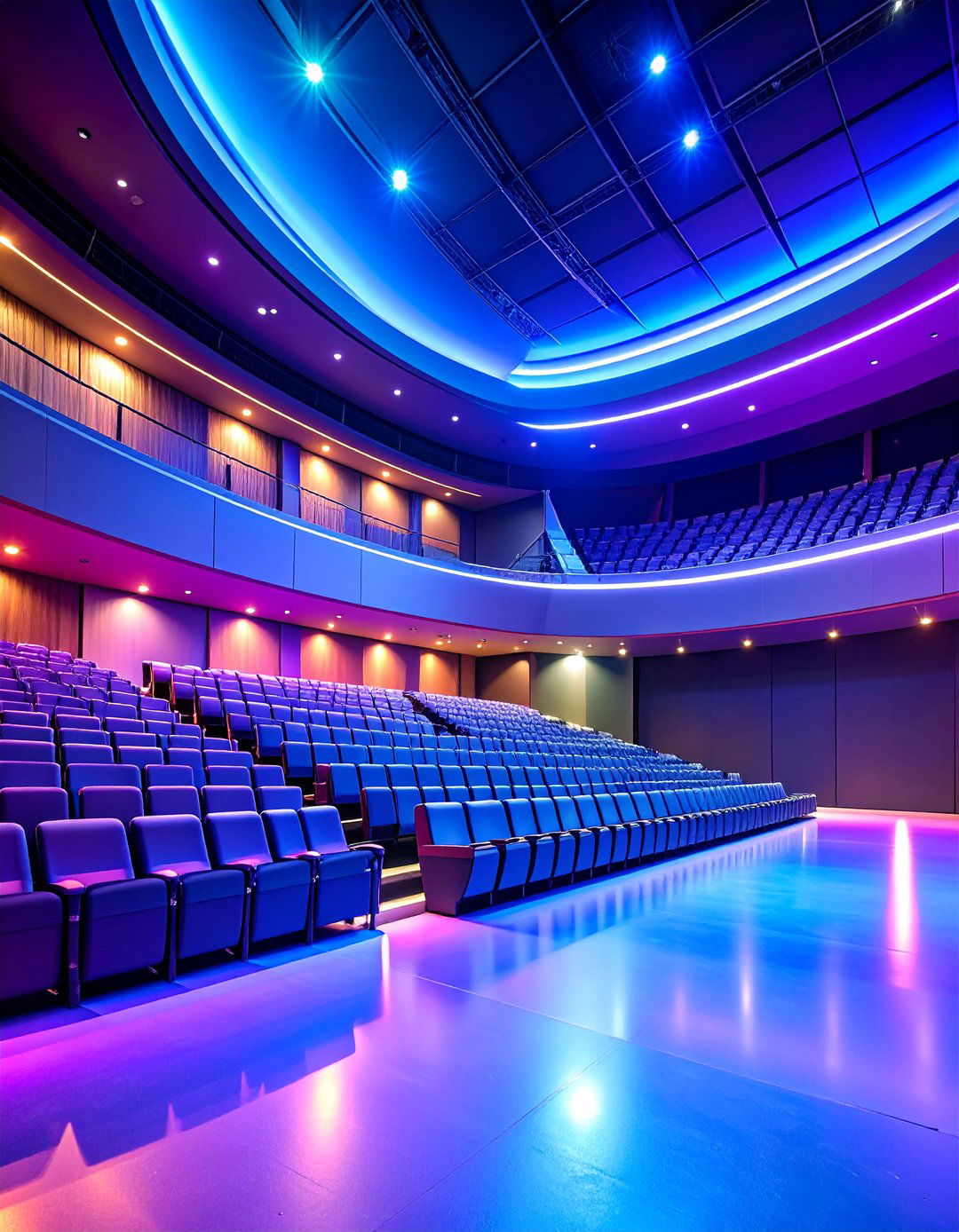
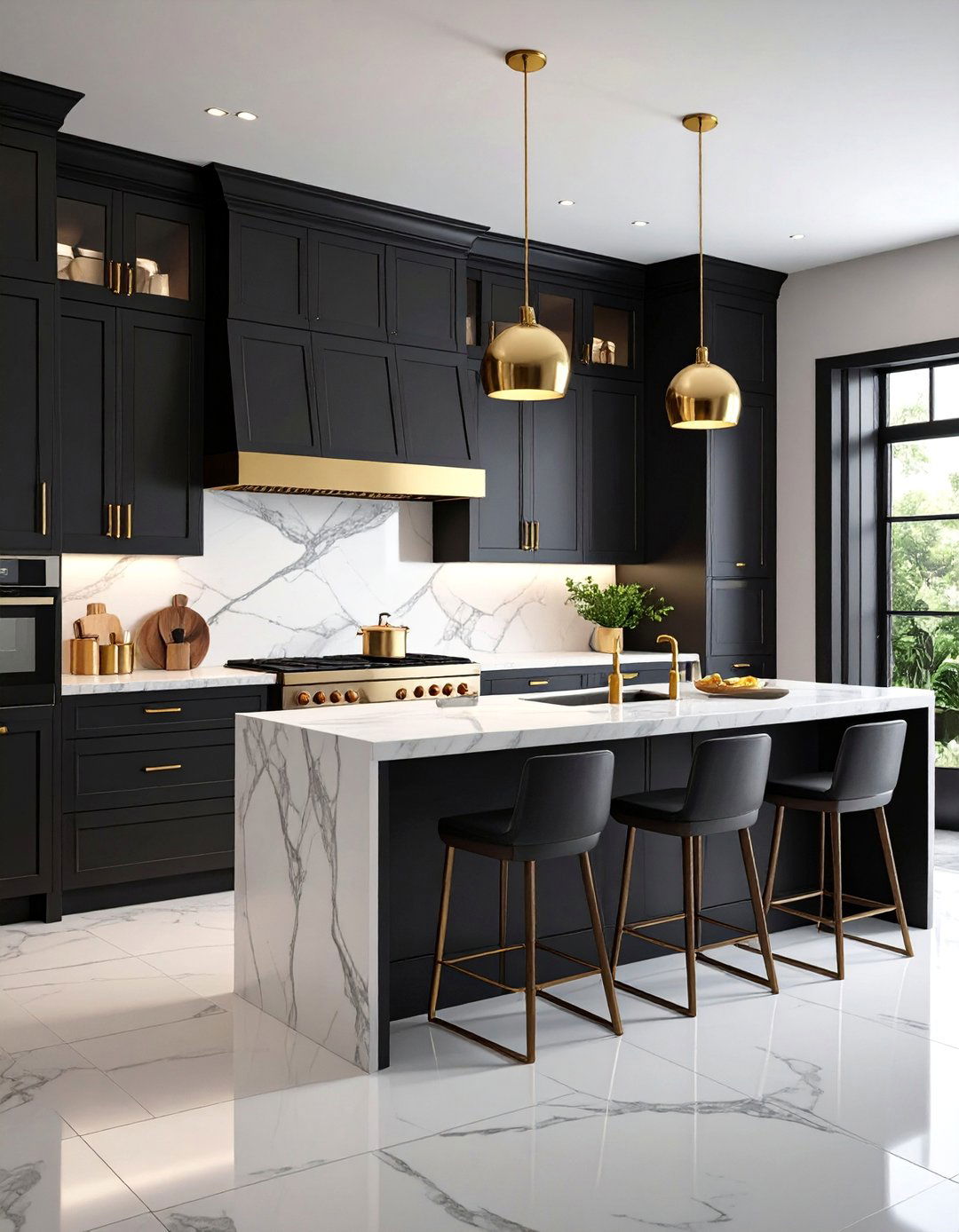
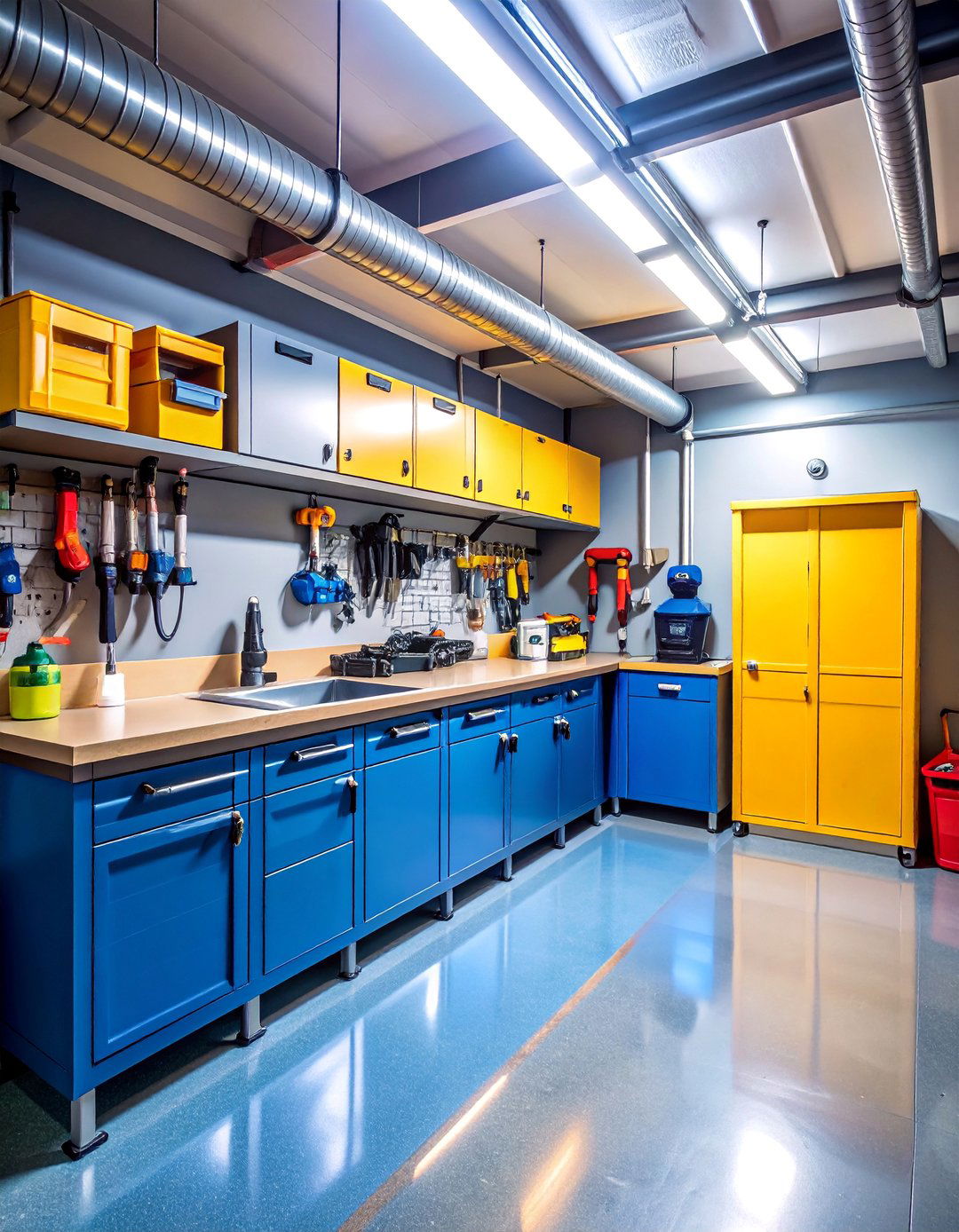


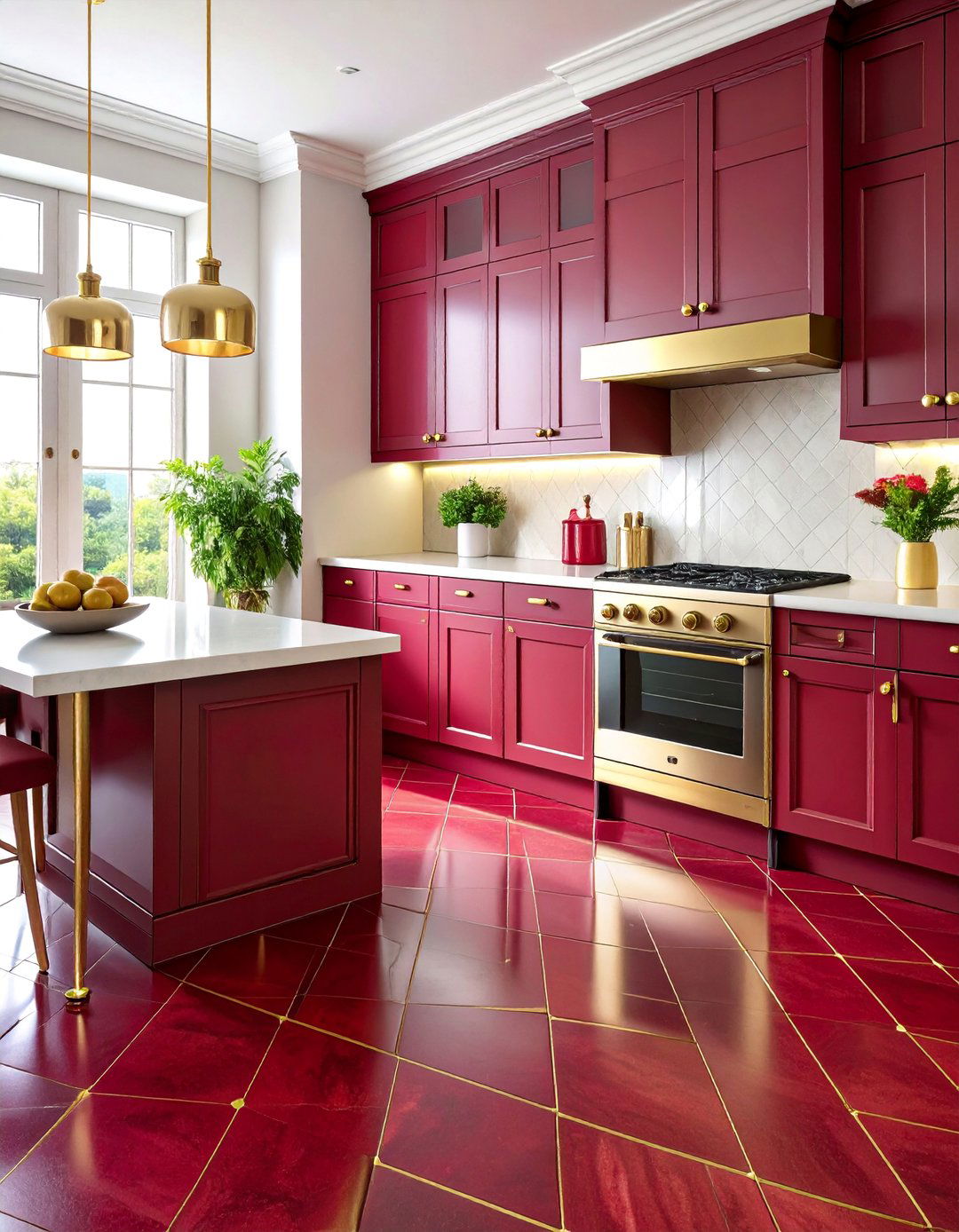
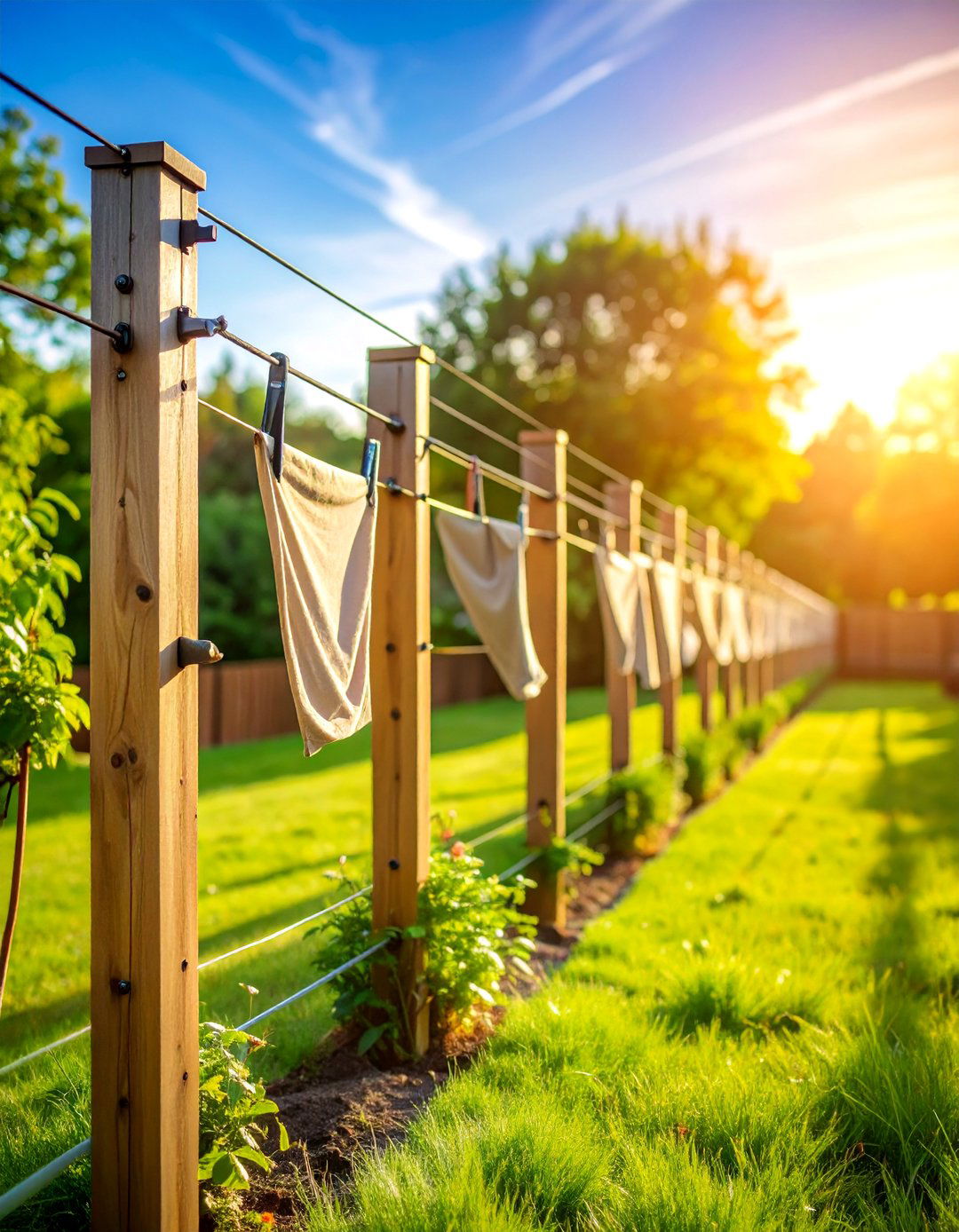
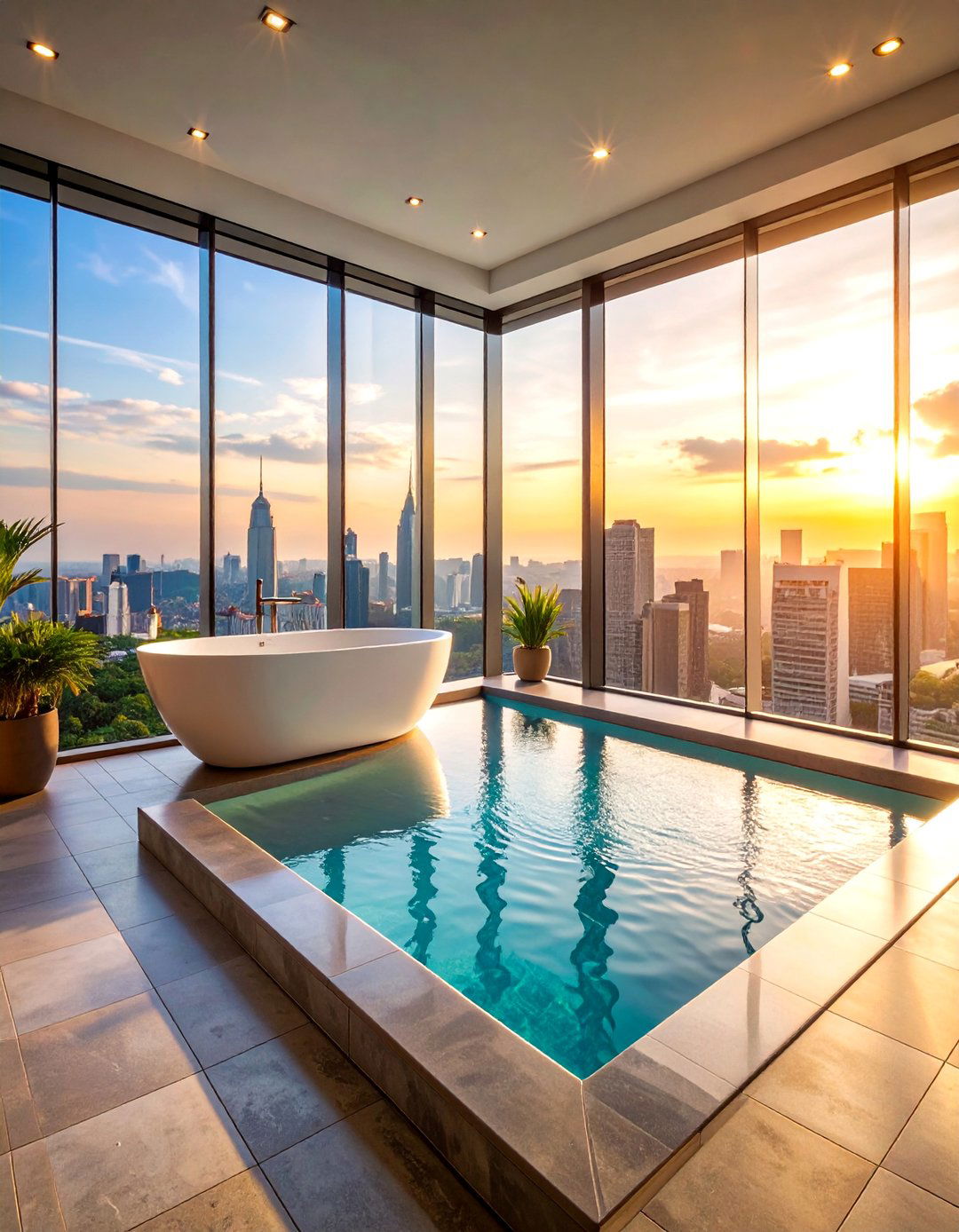

Leave a Reply